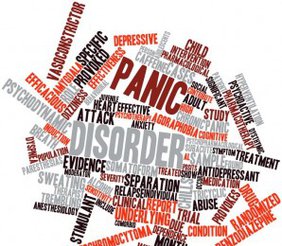Sensus
Psychotherapy
Panic Disorder with or without Agoraphobia

Panic Disorder can be successfully treated. It is characterized by sudden attacks of terror, usually accompanied by a pounding heart, sweatiness, weakness, faintness, or dizziness. During these attacks, people with panic disorder may flush or feel chilled; their hands may tingle or feel numb; and they may experience nausea, chest pain, or smothering sensations. Panic attacks usually produce a sense of unreality, a fear of impending doom, or a fear of losing control.
A fear of one’s own unexplained physical symptoms is also a symptom of panic disorder. People having panic attacks sometimes believe they are having heart attacks, losing their minds, or on the verge of death. They can’t predict when or where an attack will occur, and between episodes many worry intensely and dread the next attack.
Panic attacks can occur at any time, even during sleep. An attack usually peaks within 10 minutes, but some symptoms may last much longer. Panic attacks often begin in late adolescence or early adulthood, but not everyone who experiences panic attacks will develop panic disorder. Many people have just one attack and never have another.
People who have full-blown, repeated panic attacks can become very disabled by their condition and should seek treatment before they start to avoid places or situations where panic attacks have occurred.
For example, if a panic attack happened in an elevator, someone with panic disorder may develop a fear of elevators that could affect the choice of a job or an apartment, and restrict where that person can seek medical attention or enjoy entertainment.
Some people’s lives become so restricted that they avoid normal activities, such as shopping or driving. Some become housebound or are able to confront a feared situation only when accompanied by a spouse or other trusted person.
When the condition progresses this far, it is called agoraphobia, or fear of open spaces.
Early treatment can often prevent agoraphobia, but people with panic disorder may sometimes go from doctor to doctor for years and visit the emergency room repeatedly before someone correctly diagnoses their condition.
This is unfortunate, because panic disorder is one of the most treatable of all the anxiety disorders, responding in most cases to certain kinds of medication or certain kinds of cognitive psychotherapy, which help change thinking patterns that lead to fear and anxiety.
Panic disorder is often accompanied by other problems, such as depression, drug or alcohol abuse. These may need to be treated separately.
Cognitive Behavioural Psychotherapy (CBP) is indicated by the National Institute for Clinical Excellence (NICE) as a treatment of choice for people experiencing Panic Disorder with or without Agoraphobia.
Copyright © All Rights Reserved